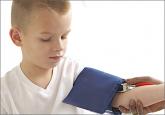Article

Pediatric hypertension: Often missed and mismanaged
- Author:
- Robert Gauer, MD
- Megan Belprez, MD
- Caitlyn Rerucha, MD
Delayed recognition of hypertension in children can have lasting consequences. The resources detailed here—including Web-based calculators and at-...
